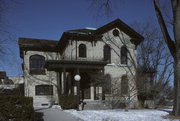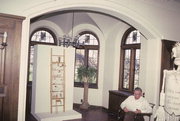| Additional Information: | A 'site file' exists for this property. It contains additional information such as correspondence, newspaper clippings, or historical information. It is a public record and may be viewed in person at the Wisconsin Historical Society, State Historic Preservation Office.
KEYSTONES AND BALUSTRADES WERE MADE AT KOHLER'S FOUNDRY WHICH HE FOUNDED. SHEBOYGAN COUNTY LANDMARK. PHILLIP WAS RESPONSIBLE FOR THE C. 1920S INTERIOR.
Austrian immigrant John Michael Kohler came to Sheboygan in 1871 and married Lillie Vollrath, daughter of a prominent industrialist. Two years after his marriage, Kohler bought his father-in-law's foundry, where he manufactured agricultural implements and, later, enameled iron products. In 1888, Kohler organized a new company to produce ornamental iron and enameled plumbing fixtures and cookware. From these beginnings grew the Kohler Company, now one of the world's leading manufacturers of plumbing fixtures and other products.
Family tradition holds that John Kohler himself designed this Italianate house. Characteristic of the style, the cornice returns at the front gable suggest a classical pediment, and scroll-cut brackets with knob pendants support the overhanging eaves. It also incorporated personal touches made at Kohler's iron factory: the iron capitals, cast-iron keystones, and iron sills at the brick round-arched windows; the roof cresting; the gazebo; and the fountain, the latter adorned by a cast-zinc sculpture of children and a dolphin.
The gazebo and fountain were moved to their current locations about 1920, when architect Richard Philipp refashioned the house for Kohler’s son Walter Sr. Philipp removed the porch’s gingerbread woodwork and installed hexagonal cast-iron columns to replace the originals. He also added the stuccoed second-story bay and installed stained-glass windows and interior cabinets, designed by Austrian architect Kasper Albrecht. The 1970 addition extending from the rear of the house contains an arts center, including galleries, a theater, classrooms, and a museum. A larger addition, designed by Kubala Washatko Architects in 1999, features an atrium with rich modern finishes of slate, birds-eye maple, and stainless steel. |
|---|





